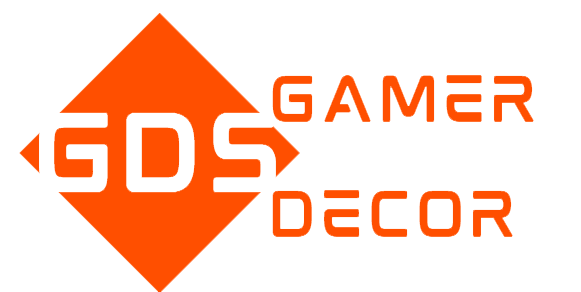Cables don’t have to ruin a good setup. With a simple plan and a few affordable parts, you can route, hide, and label every wire so the desk looks clean from any angle—photos, streams, and day-to-day use included. This guide covers a fast 30-minute tidy and a full weekend makeover.
Looking for a Solution for Your Cable Management?
The same website who wrote this guide has the perfect solutions for you.
Shop Cable Management Solutions1) Make a quick plan (5 minutes)
- List devices: monitor(s), PC/console, keyboard, mouse, mic, camera, speakers, hub/dock, lights.
- Note cable types/lengths needed (power, HDMI/DP, USB-C, USB-A, audio).
- Decide the home run: one central path where most cables travel (usually under the back edge to a mounted power strip).
Goal: all vertical drops happen once, not everywhere.
2) Tools and parts you actually need
- Low-profile Velcro ties (reusable)
- Adhesive cable clips + under-desk raceway or cable tray
- Power strip with flat plug (mountable) or a cable management box
- Cable sleeves (neoprene or braided) or spiral wrap for visible runs
- 3M Command strips or wood screws for trays (depends on desk)
- Short right-angle adapters for HDMI/DP/USB where depth is tight
- Labels or a label maker (or painter’s tape + marker)
Optional upgrades: grommet hole, desk-mounted hub/dock, under-desk USB power, VESA monitor arm with cable channels.
3) The 30-minute tidy (fast wins)
- Unplug everything and wipe the desk.
- Mount the power strip under the back edge (centered).
- Create one trunk: stick a short raceway or tray under the desk and lead all power + data lines to it.
- Bundle by destination: monitor bundle, PC bundle, peripheral bundle. Velcro every 10–15 cm.
- Shorten extra length with loose figure-eight loops, Velcroed to the underside, not the leg.
- Label at both ends (PSU, monitor, mic, cam). Future you will thank you.
Result: nothing hangs, nothing dangles, nothing touches the floor except one clean wall run.
4) Full makeover (1–2 hours)
Route map
- Back edge: trays/raceways carry everything horizontally.
- Single drop: one vertical channel down the leg closest to the outlet. Use a floor channel if crossing to a wall.
- Monitor arm: use the arm’s built-in clips; right-angle connectors reduce stress and depth.
Mounting order
- Power strip → 2) Tray/raceway → 3) PSU bricks in a cable box or on a small under-desk shelf → 4) Dock/hub mounted near the desk edge you use.
Visible runs
- Wrap PC-to-monitor cables in a single braided sleeve.
- For glass or open desks, use clear adhesive clips and slim black or white cables to match the background.
5) Specialized tips for gamers
- High-speed DisplayPort/HDMI: avoid cheap extenders; buy correct length. Keep coils loose to prevent signal issues.
- USB mic/cam: route on the opposite side of power bricks to reduce interference.
- Headset & controller charging: add a small under-desk USB strip with individual switches.
- RGB strips: hide LED dots with aluminum diffuser channels; feed wires through the rear tray so no leads are visible.
- Mouse cable: use a bungee or low-friction sleeve if wired; otherwise go wireless and charge via a hidden dock.
6) Aesthetic choices that photograph well
- Match colors: black cables on dark wood, white on light walls; avoid mixed colors.
- Right-angle plugs behind monitors make the screen sit closer to the wall.
- Symmetry: center the trunk and mirror left/right accessories for cleaner composition.
- No vertical spaghetti: any line heading down should travel inside a sleeve or a leg channel.
7) Safety and reliability
- Don’t overload a single strip; plug high-draw devices (PC, heater) into a surge protector rated for the load.
- Keep power bricks ventilated; don’t wrap them in foam or stack tightly.
- Use strain relief: leave a little slack at each device to avoid port damage.
8) Maintenance routine
- Monthly: dust the tray and fan intakes; re-tighten Velcro if it loosens.
- New gear rule: measure first, order correct-length cables, add labels before plugging in.
9) Sample shopping list (under-desk setup)
- 1× metal cable tray (60–100 cm)
- 1× mountable surge protector, flat plug
- 12–24× Velcro ties
- 10–15× adhesive clips (corner + straight)
- 1× braided sleeve (1–2 m)
- 1× spiral wrap for leg drop
- 1× cable box for bricks
- Optional: dual monitor arm with cable channels; aluminum LED diffuser kit
10) Photo checklist (for that “picture-perfect” shot)
- Turn off room lights; use bias light behind monitor + soft key light.
- Hide every wire in the frame; shift the desk 2–3 cm if needed to conceal the wall outlet.
- Wipe the desk, center the mouse pad, align the keyboard, square the monitor.
- Shoot slightly above desk height; keep verticals straight.
Frequently Asked Questions
How do I hide the thick PC power cable?
Run it inside the main sleeve to the tray, then down a leg channel to a floor strip. Keep only the last 10–15 cm visible at the wall.
Is drilling a grommet worth it?
If your desk allows it, yes. A rear-center grommet sends monitor cables straight down into the tray for the cleanest look.
What about standing desks?
Use a coiled or slack loop between the tray and wall outlet and a soft fabric sleeve along one leg. Test full up/down travel before finalizing.
Will adhesive clips damage the desk?
Quality 3M pads remove cleanly; for heavy loads use screws in a metal tray instead.


